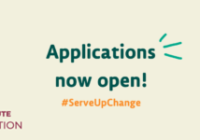By Jessica Frank, BioMed Program Manager
 In the past decade, we have seen a meteoric rise in the use of the word mindfulness. Mindfulness has now become part of our everyday vernacular, with mindfulness meditation and practices permeating a wide range of our cultural fabric. As a concept, mindfulness is nothing new. Buddhist monks have been practicing it for more than 2,000 years. But it seems to be having its “moment” (pun intended) in our current environment of non-stop distractions and pervasive anxiety.
In the past decade, we have seen a meteoric rise in the use of the word mindfulness. Mindfulness has now become part of our everyday vernacular, with mindfulness meditation and practices permeating a wide range of our cultural fabric. As a concept, mindfulness is nothing new. Buddhist monks have been practicing it for more than 2,000 years. But it seems to be having its “moment” (pun intended) in our current environment of non-stop distractions and pervasive anxiety.
But what exactly is mindfulness?
Mindfulness is the everyday practice of paying attention to the present moment but without the added storytelling. For example, if we are aware that we have a sudden pain in our foot, with mindfulness, we simply notice, “Right now, I feel throbbing in my foot.” The stripped-down, bare-bones commentary gives us just enough of a toe-hold to then respond appropriately to the discomfort.
However, without mindfulness, we might notice the sudden sensations and immediately spiral out into thoughts like, “Well, that’s just typical, I’m always in pain, when will I ever not feel pain? I bet this is going to ruin my plans for exercising later, so I might as well just go eat a donut.”
See the difference? Awareness–minus the added storytelling–is what mindfulness is all about.
This, however, does not mean it’s easy! Mindfulness can be quite challenging, but like anything worthwhile, mindfulness has countless rewards if we can resolve to make it an everyday habit.
What Mindfulness Is NOT
When many people start out practicing mindfulness meditation in a structured way, they often do so in the hopes of stopping the raging torrent of thoughts altogether, emptying their minds completely, and drifting off into a state of bliss. But mindfulness doesn’t work that way.
Mindfulness is not about stopping the deluge, rather it’s about changing how long we stay soaking wet. Think of it like this: thoughts are like a waterfall. Most of us exist underneath the waterfall getting completely wet and stuck. Mindfulness gives us the chance to step behind the waterfall. We see the flow of thoughts, but we stay relatively dry. Over time, we begin to see all the ways we have been trapped inside a waterfall of thoughts and it becomes easier and easier to get out from underneath the deluge and watch the thoughts flow on by.
 Tips for Starting a Mindfulness Practice
Tips for Starting a Mindfulness Practice
1). Start Small: Any new skill takes time to develop. You may start out setting the intention to meditate every single day for an hour. But as a beginner, that’s not realistic. It’s best to start with five minutes a day for one full week. Then on week two, practice for 10 minutes every day; week three 15 minutes. After that, check in to see how 15 minutes feels for you. Is this a reasonable goal? If so, stick with 15 minutes per day or move up to 20 and see how that feels. For the beginner meditator, it’s the consistency and quality of your practice that counts the most, not the quantity!
2). Chairs Aren’t Cheating: How many of us think of meditation and up pops an image of a monk in robes sitting cross-legged under a tree? We need not ascribe to the ideal of a monastic in today’s modern world. Instead, create the foundation for a comfortable posture. If you are not able to sit cross-legged on the floor or on a cushion, use a straight-back chair for your meditation. Being able to sit with ease rather than powering through discomfort will do wonders for helping your mindfulness meditation habit stick.
3) Have a Landing Pad for Your Mind: After you’ve discovered the best posture for your body, then you can begin to practice paying attention to the present moment. It’s best in the beginning to give your mind something to land on, a meditation Home Base. This is helpful since you’re starting to reactivate the “muscle” of awareness with repetition. Once you have an anchoring object established, when (not if) you become aware that your attention drifted, you automatically have something to come back to. Over time, this repetition will become more and more like second nature. Some examples of anchors are the feeling of the seat in the chair, physical sensations of breathing in and out, the feeling of your feet on the floor, or the touch of the hands resting on your lap.
4). Apps Offer Support and Community: Having an individual formal mindfulness practice is a great way to foster resilience, decrease reactivity, and even beef up our compassion muscle. But to help support your individual practice, you may like to use an app. Apps can give us that extra boost of guidance, open us up to new techniques, and most apps have a community component where we can connect with others on a similar path.
5) You Can’t Do It Wrong: Flexing your mindfulness muscle is not a panacea for all that is stressful in this world, but it is a super-power of sorts in that you can’t do it wrong. Paying attention to the present moment without the added story-telling is what it’s all about. If you notice yourself on autopilot, lost in thought, or ruminating AND suddenly you become aware of this, you are succeeding, not failing! No matter how long we’re off in fantasy land and no matter how often we get distracted, as long as we notice and return to the present moment, this is mindfulness at work. One famous quote reminds us of this remarkable process: “You can’t stop the waves, but you can learn to surf.”
Please join us for an experiential and interactive episode of BioBites on May 2nd at 12:00 ET as Colleen Camenisch of The Mindfulness Standard takes us through a Taste of Mindfulness.
Register here: https://bit.ly/may2biobites
###
Any medical information contained herein is provided for informational purposes only; it is not advice, nor should it be treated as such. If you have any healthcare-related concerns, please call or see your physician or other qualified healthcare provider. Educational information provided by the Marion Institute or any employee of the Marion Institute is NOT intended as a substitute for a healthcare provider’s consultation: if you have a health concern, please do not delay in seeking medical guidance from a health care professional. The Marion Institute and its employees make no representations, nor any warranties, nor assume any liability for the content herein; nor do we endorse any particular product, provider, or service.












This Post Has One Comment